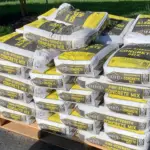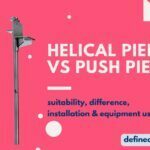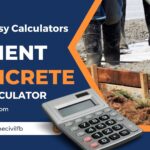While living in a manufactured home or mobile home, you are always worried about the stability of its foundation against harsh winds and destructive seismic activity.
As a mobile homeowner, you enjoy its light weightiness and portability, but at the same time, these homes are defenseless against natural calamities; in the absence of a proper tie-down and anchorage system with the ground.
Manufactured homes, built entirely in a factory, are an attractive economic alternative due to lower construction costs when compared with traditional site-built homes.

The factory-built structure of mobile homes is resilient against shaking or severe forces to which they are subjected during transportation from factory to site.
However, the seismic performance of manufactured homes largely depends on the anchoring, connection, and tying of the home with the foundation.
What are tie-down systems?
A system of anchors, steel straps, and stabilizer plates are installed for the common pier and beam foundation of a manufactured home to stabilize it against tilting and to slide as a result of an earthquake or a tornado.
Types of Tie-downs
The gravity load of the manufactured homes is supported on piers. These piers are commonly steel jacks or concrete or block masonry blocks, and sometimes even a complete perimeter wall acts as a footing.
In order to achieve resistance against ground motion forces and wind loads following foundation support systems are adopted: –
- Engineered Tie-Down System (ETS)
- Earthquake Resistant Bracing System (ERBS)

Engineered Tie-Down System (ETS)
Engineered tie-down systems are primarily required to resist wind forces, but nonetheless, it also resists earthquake shaking.
But for zones of high seismic activity, Earthquake resistant bracing system is a must to have. Otherwise, manufactured homes without proper bracing against seismic forces can fall off their supports, thereby damaging the home as well as rupturing utility connections which can cause fires.
Because these manufactured homes are elevated and light in weight, so they are vulnerable to uplifting wind forces if not properly equipped with skirting. So along with the earthquake tie-down, you must also install skirting concrete panels at the periphery.
There are different types of tie-downs, and which one would suit your home depends on:
- Location of your home in terms of seismic and wind zones
- Type of soil
- Height of ground anchors and spacing of the beams.
Over the top anchors
These types of anchors are installed either during or after construction. If they’re installed after construction, they are exposed over the roof and may look weird. But during construction, they can be hidden under the roof and sliding.
Frame Tie-down anchors
Tie-down anchors are installed underneath the home and usually are attached to a layer of concrete or other solid material to be secured there. Sometimes tie-downs are driven in the ground, but again this all depends on the type of soil you encounter.
Now that you know how a manufactured home is tied down for its protection and safety against wind and earthquake forces, you should never ignore securing your home down with the ground.


















